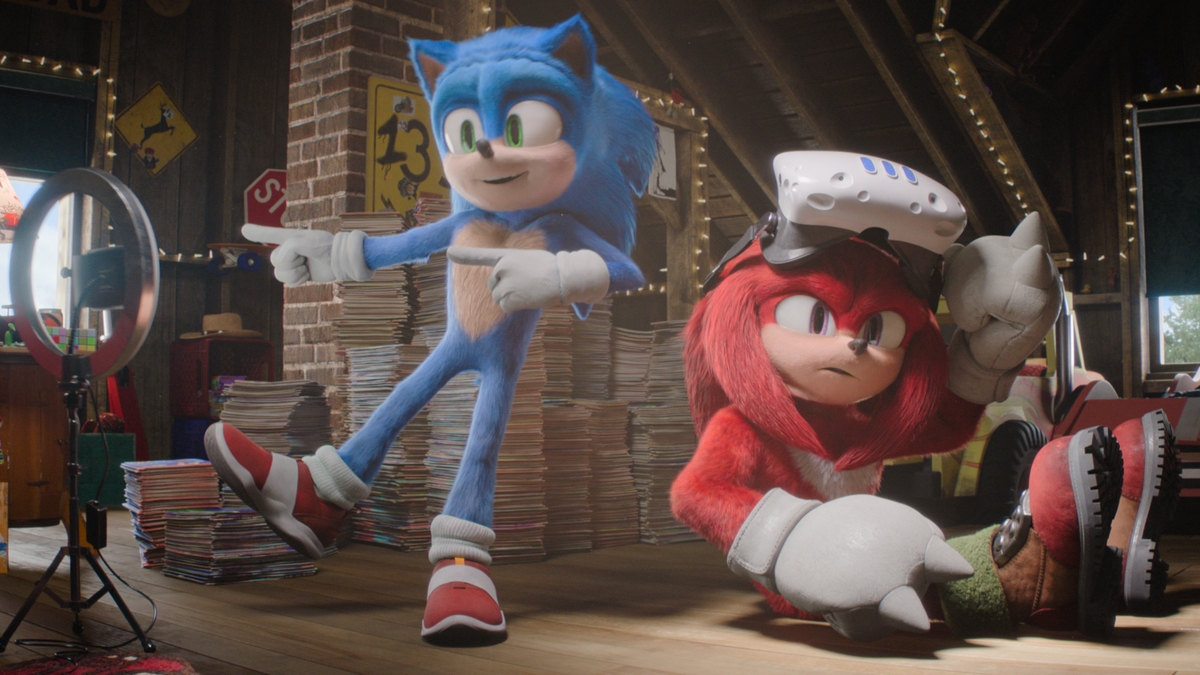
I’ll admit that when I first heard that Nintendo was developing an online shooter for the Wii U, I was more apprehensive than excited. It wasn’t because a lack of confidence in the company’s ability as a developer, but rather their track record and history with online games that worried me. Sure, Mario Kart 8 and Super Smash Bros. For Wii U provide some great online modes, but these are franchises and genres that the Big N has been tinkering with for decades, and they’ve had their fare share of mishaps along the way.
Yet, after spending a couple of weeks with Splatoon, I’m pleasantly surprised to find myself in a position of, well, surprise.
Granted, I think a lot of what makes Splatoon special is the fact that Nintendo decided to not borrow from existing franchises and series, and instead develop an entirely new IP in the process. Sure, Splatoon is (in many ways) reminiscent of a few games from the past, but it’s undoubtedly the most unique (if not bizarre) experience to come out for a Nintendo system in a while.
For the uninitiated, Splatoon is an online-focused, third-person shooter that tasks players not with exchanging gunfire against one another, but rather shoot ink around each stage. It’s a fresh take on a classic formula, but one that manages to stretch its legs and provide some deep, meaningful gameplay for those who are looking for it.
While you can eliminate your opponents by spraying them in ink, the main focus of each game mode is to cover as much area as you can with your own team’s ink, all while trying to keep your opponents from doing the same. Whatever ink you spray isn’t permanent, however, as an enemy can easily come along and re-paint an area in his/her own color. This tug-of-war style lends a lot of tension to the game, and entire matches can be decided in the last few seconds.
While there are plenty of offline modes to keep you distracted, online is where Splatoon shines brightest, and Nintendo has put a lot of care into it. Turf War, the game’s most commonly advertised mode, tasks two teams of four with covering a stage with as much ink as they can in the span of three minutes, all while keeping their opponents at bay. While the three minute time limit might seem a little restrictive, it provides for some genuinely thrilling moments, with each second being crucial when it comes to winning. While it might seem simple at first, there is a lot of nuance to the game as a whole, though Nintendo does an excellent job at slowly introducing you to the more advanced techniques.
Aside from territorial control, laying down ink provides a few benefits and abilities. Not only does it slow down and damage your opponents, but you can swim through the ink at an increased speed, allowing you to travel through grates and up walls, as well as refilling your ink supply. Switching back and forth between shooting ink and zipping across a stage is key to success, as you’ll be able to cover a lot more ground than you would by just walking. Refilling your ink supply is also key, as all of your weapons and gadgets use ink as ammo.
Speaking of which; weapons come in three basic forms, with each one focusing on a different style of gameplay. ‘Shooters’ are most similar to your standard gun or assault rifle, with higher rates of fire and medium ranges. For the more adventurous, chargers (which are essentially sniper rifles) shoot ink at longer ranges and in straight lines, but take some time to power up.
My favorite, however are rollers, which are essentially giant paint roller that you run around with, painting the floor in front of you. While they might lack the range and versatility of your standard guns, they trump close-range combat, allowing you to roll over enemies with a one-hit kill. There are also a handful of sub-weapons and gadgets as well, which run the range from different types of ink grenades and bombs, to mines and disruptors, which slow down and hamper your opponents’ abilities.

Unfortunately, there are a few key design decisions which noticeably detract from the online experience, though I always remain hopeful that Nintendo could alter some of these through future updates and patches. For starters, there is no way to play any of these online modes by yourself against AI opponents; a shame, considering most other Nintendo games offer similar options. The lack of voice chat, while unsurprising, is a bit of a misstep here as well. While I won’t argue that voice chat does have its downsides when it comes to player behavior, it doesn’t help the fact that it becomes nearly impossible to communicate with your teammates without resorting to communication methods (thank god for Skype).
While it might not seem like a huge problem to a casual player, the issue is compounded further when you realize that you cannot switch your loadout in-game, requiring you to wait until a match is over and back out of matchmaking to pick a different loadout. During one match, all four members of my team picked chargers, and needless to say, we got completely dominated because of it.
Loadouts are also a curiosity, seeing as how certain weapons are tied to specific sub-weapons and powerups, meaning you won’t have free reign when it comes to picking what weapon and gadgets you want to outfit yourself with. Lastly, there is no option to set up any custom match, and the game filters maps in and out of rotation, with no vote system in place.
For those who aren’t that keen on playing online, Splatoon does feature a single-player “Hero Mode,” which tasks you with defending your fellow Inklings (did I forget to mention you play as a humanoid squid?!) from the invading Octarians, who are resurrecting a long-dormant species war by stealing your town’s power supply. Interestingly enough, Hero Mode borrows a lot of elements from the 3D Mario titles, most notably Super Mario Galaxy. While you won’t find yourself blasting through space, levels are spaced throughout different hub worlds, which you unlock sequentially. Each level is comprised of a handful of self-contained, floating structures, which you launch yourself to.
Rather than focusing on capturing territories, the single-player mode tasks you with moving forward through each level, eliminating enemies and collecting a lone Zapfish (that’s the town’s power supply I was talking about). It’s a pretty straightforward affair that only lasts a few hours, but Splatoon constantly introduces new mechanics at a welcome pace, that sometimes only last a single level. It’s a design philosophy that has pervaded many of Nintendo’s recent titles (Super Mario 3D World comes to mind) and it’s a welcome addition to Splatoon.
For example, one level renders most of the environment invisible, forcing you to paint your way through the stage while making sure not to fall off any edge. Boss battles round out the single-player, and while I won’t go out of my way to spoil any of them, let’s just say that the Nintendo ‘rule of three’ is here to stay.

Still, I think my favorite part about Splatoon is just how wacky it all looks and sounds. In many ways, the game’s visuals and soundtrack remind me of the Dreamcast classic Jet Grind Radio, with a focus on graffiti, color, music and fashion identity in full force. The game’s central hub, dubbed Inkopolis, is brimming with flashing colors, advertisements and stores; exactly what you would expect from an in-game Shibuya. The handful of stores sell different pieces of clothing, which also double as passive perks when playing online. The minute news update that plays every time you boot the game lets you know what maps are currently in rotation, and the streets are littered with other Splatoon players showing off their online clout and outfits. It’s visually impressive to say the least, and the game feels great in motion, with Nintendo prioritizing 60 frames per second both online and in Hero Mode.
Oddly enough, when running around Inkopolis, the framerate takes a noticeable hit, though this is more of a curiosity than a nuisance. On the other hand, the soundtrack is still one aspect I still remain (somewhat) divided on. Filled with energetic rock and more subdued electronic/house tunes, it’s a solid addition for the most part, though it does make use of high pitched, somewhat whining vocals from time to time, which is bound to get on your nerves at one point or another.
While I’m more than happy to find myself proven wrong by Nintendo, I find myself focusing on Splatoon’s few negatives as opposed to its many strengths, but for good reason. Because at the end of the day, I find myself completely hooked on Splatoon and its offbeat take on online shooters, though I’m always going to hold out for Nintendo to come along and fix its few faults. Not because I think the game needs it, but rather because I want to see Splatoon go from a great game to an outstanding one.
This review is based on the Wii U exclusive version of the game, which we were provided with for review.













